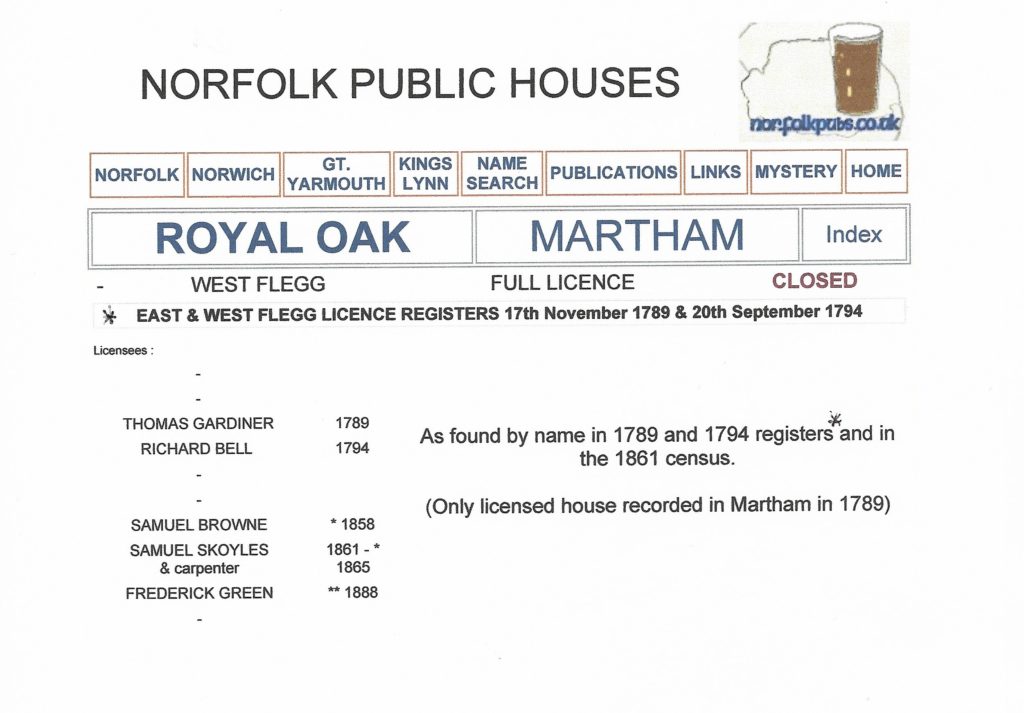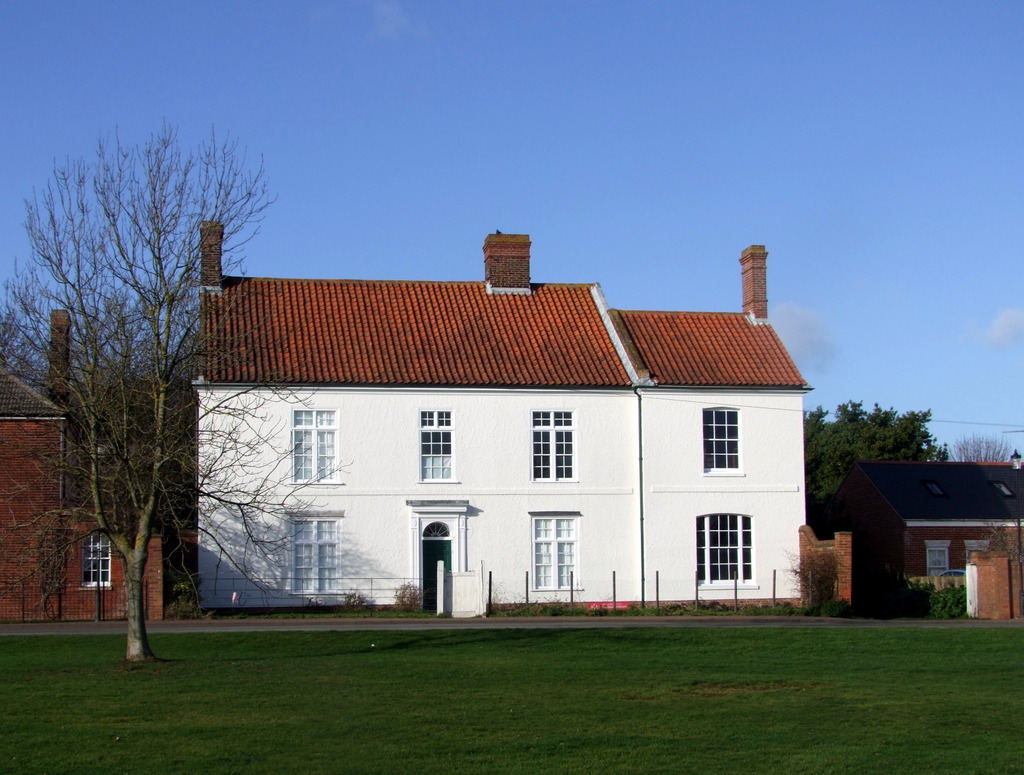Royal Oak Public House, The Green, Martham
The Royal Oak was a pub or beer house situated on the north side of the village green near to Norwich House and Brooklyn House. Where it actually was is a bit of a mystery as there are no photographs of it and it does not appear by name on any maps. They are records of it however and these are the pieces of the jigsaw that may help complete the picture of its existence.
The East & West Flegg Licence Registers of 17th November 1789 and 20th September 1794 list two of the early licensees of the Royal Oak which was said to be the only licenced pub in Martham in 1789. In that year Thomas Gardiner was the licensee and he was followed by Richard Bell in 1794. See appendix RO01 and RO02 below. Also around 1793 and 1794 there were auctions held at the Royal Oak of property and land so it certainly existed then. These are two examples of adverts for auctions held there.
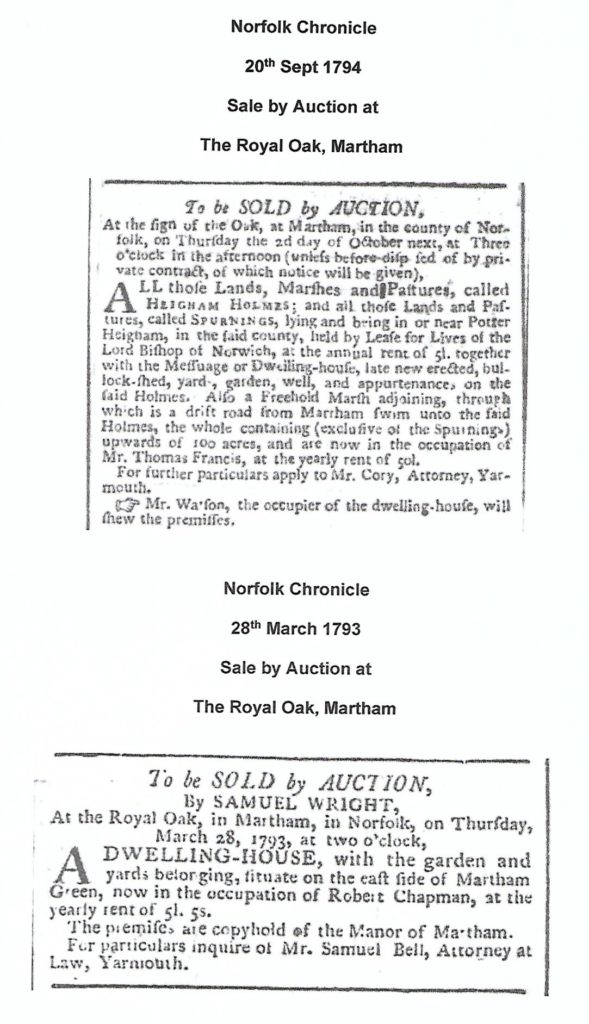
Robert Porter in his book “The Strangers Guide Book for the Polite Village of Martham” published in 1830 mentions the Royal Oak as being on the north side of the Village Green.
By the time we get to the 1840’s we can find several records that support a Robert Ward as being associated with the Royal Oak. The main one is the 1841 census which names the pub and lists Robert as the head of household which also has several other people living there so it was a substantial building with several bedrooms. Robert was also a blacksmith so the pub was not his only trade. The walking order of the census appears to be from east to west and places it as preceding the King’s Arms Inn. Both are clearly named which at least rules out the King’s Arms and the Royal Oak being the same premises. See appendix RO03 below.
Robert Ward was also listed in the 1840 Poll Register as owning a house and land ‘near the green’. Likewise, he appears in White’s Trade Directory for the year 1845 as a blacksmith. And, in 1850 he was listed in Hunt & Co’s Directory but by this time he was a carrier so he may have given up the pub trade or done it part time but he was still in the area.
The 1842 Martham Tithe Award and map gives some help. Robert Ward was listed as being the owner of plot number 329. See appendix RO04 below. This is a copy of the Norfolk map centred on the Village Green. Plot 329 covers what today we know as Norwich House and Mountfields or Cobblers Cottage. The outbuildings may have been where Robert Ward’s blacksmith’s workshop was. The Royal Oak is not specifically mentioned in the Award so it is not clear if it was part of plot 329 or if he was the landlord and it was elsewhere.
Plot 328 is Brooklyn House owned by Rev. Charles Boudell and plot 330 is the King’s Arm Inn run by William Rogers. It is likely that the eastward end of Brooklyn House was the Royal Oak beer house run by Robert Ward.
When we move on to the 1851 census, William Rogers was still the landlord of the King’s Arms which appears as the top entry on page 34 of the return but no other nearby properties are named. The Royal Oak and Norwich House are not specifically mentioned in the 1851 census and it is not easy to identify them. Adjacent properties are occupied by James Linford a general shopkeeper, Charles Purdy a draper and Matilda Womack of Brooklyn House who was retired.
In the early days of the local Oddfellows Lodge they met at the King’s Arms and the Royal Oak where a meeting room would be provided free of charge, on the understanding that members would “take something for the good of the house”, i.e. buy plenty of beer, which most were very happy to do. This was commonly termed as paying a “Wet Rent”. We get confirmation of a meeting of the Oddfellows at the Royal Oak from an article below that appeared in the Norwich Mercury on 2nd February 1860.
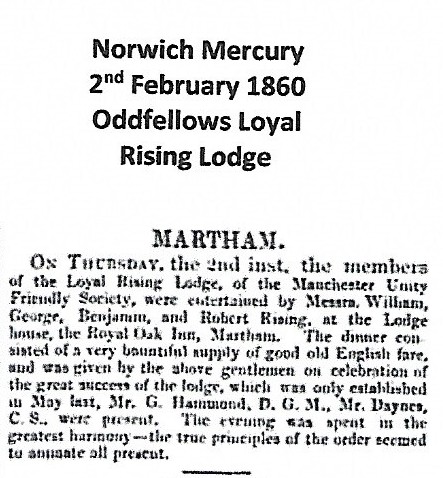
By the time we get to the 1861 census things are much clearer. The return lists Norwich House at the bottom of page 13 which was occupied by William Lack who lived there for over 30 years trading as a grocer and draper. The Royal Oak is the next entry at the top of page 14 with Samuel Skoyles as a beer retailer and this matches with the Licensee Registers that have him as landlord from 1858 to at least 1865. See appendix R005 below. The intriguing thing is that Brooklyn House is not listed anywhere else but we know it is next door to Norwich House so this points to the Royal Oak and Brooklyn House being the same building or at least part of it. There is another small clue in the census return that also shows a John Warnes as a master gardener as part of the Skoyles household at Brooklyn House.
Further proof that the Royal Oak was in full use in 1862 appears in a newspaper advert published in The Yarmouth Independent dated 9th August that year announcing an auction to be held at the Royal Oak Inn at Martham with 5 Lots. Lot 4 was the pub itself described as a “valuable Free Public House, on Martham Green called The Royal Oak with the capital stables, coach houses, skittle ground, builder’s shops and outbuildings, excellent bowling green, walled gardens and adjoining arable land containing altogether 1acre, 1rod & 19perches in the occupation of Mr Skoyles.” This can be seen at appendix RO06 below and the full description indicates the building must have been all of what we now know as Brooklyn House rather than just a small part of it.
Likewise, another auction took place at The Royal Oak on 11th June 1863 when Mrs Lacey, the widow of William Lacey sold two substantial houses, gardens and barns etc she owned in Black Street plus a piece of marsh just off the west side of Cess Road leading to the river.
Appendix RO07 lists a Frederick Green as being the licensee in 1888 but there are no other records that support this or indicate where the premises were and the ** rating indicates some degree of doubt.
The conclusion must be that The Royal Oak Pub was the same property as Brooklyn House or, towards the end of its existence only occupied the small east end that was used by Lloyds Bank much later on. Looking at the front of the house it is evident that the east end roof is lower; the front projects a little; the widows and chimney are a different style, and this end was not included in the Grade II listing.
Appendix RO01
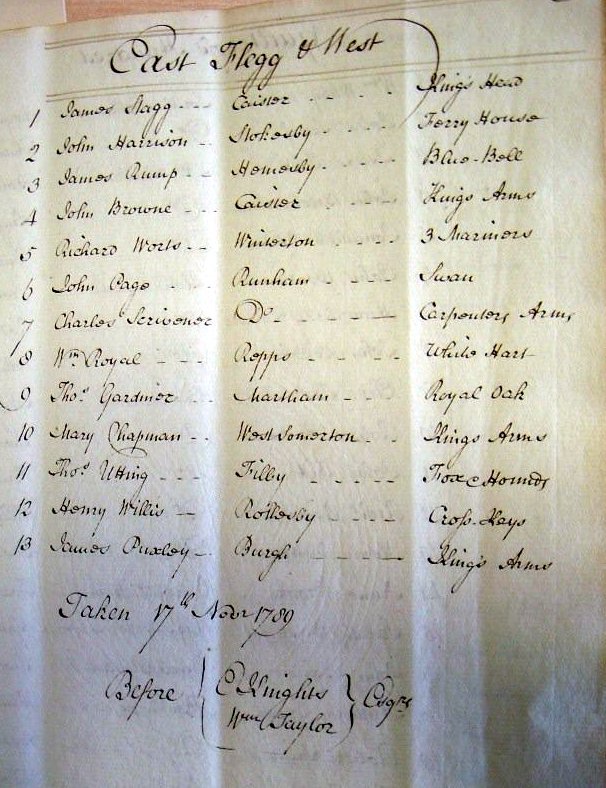
Appendix RO02
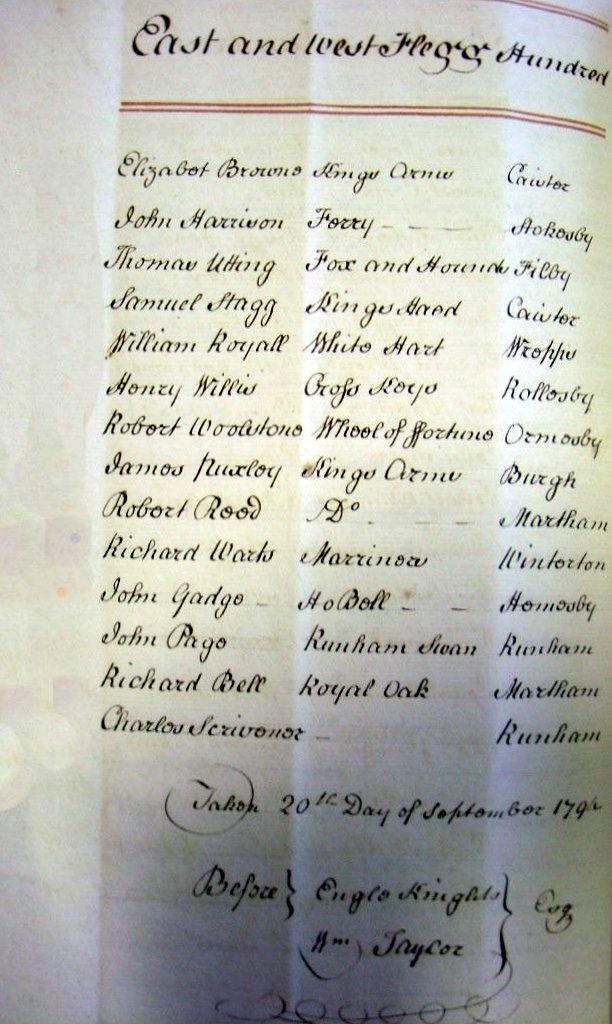
Appendix RO03
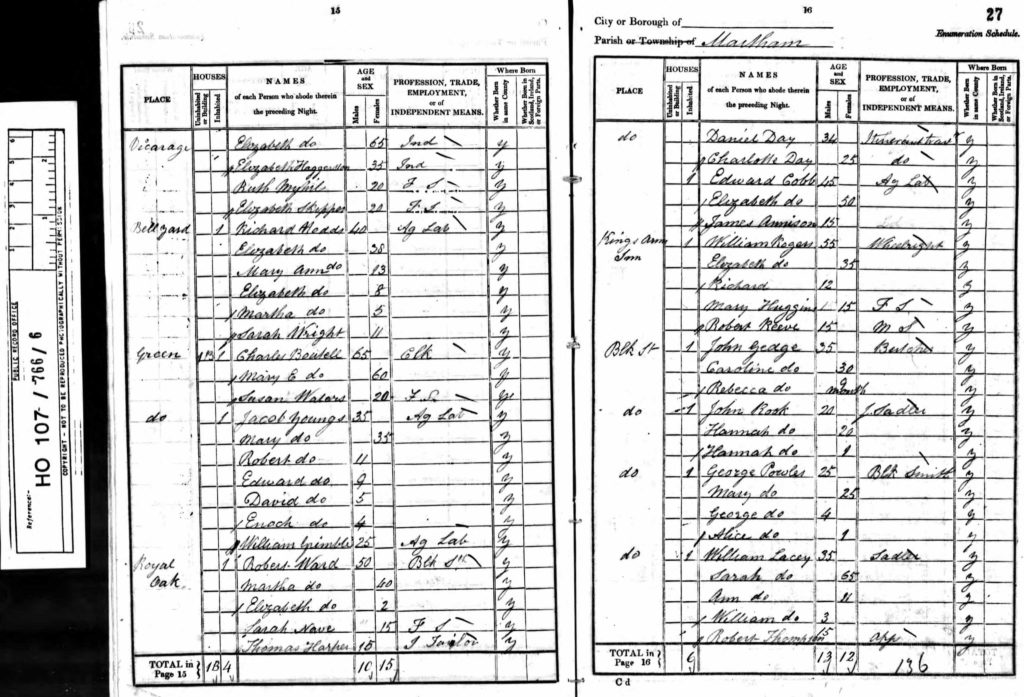
Appendix RO04
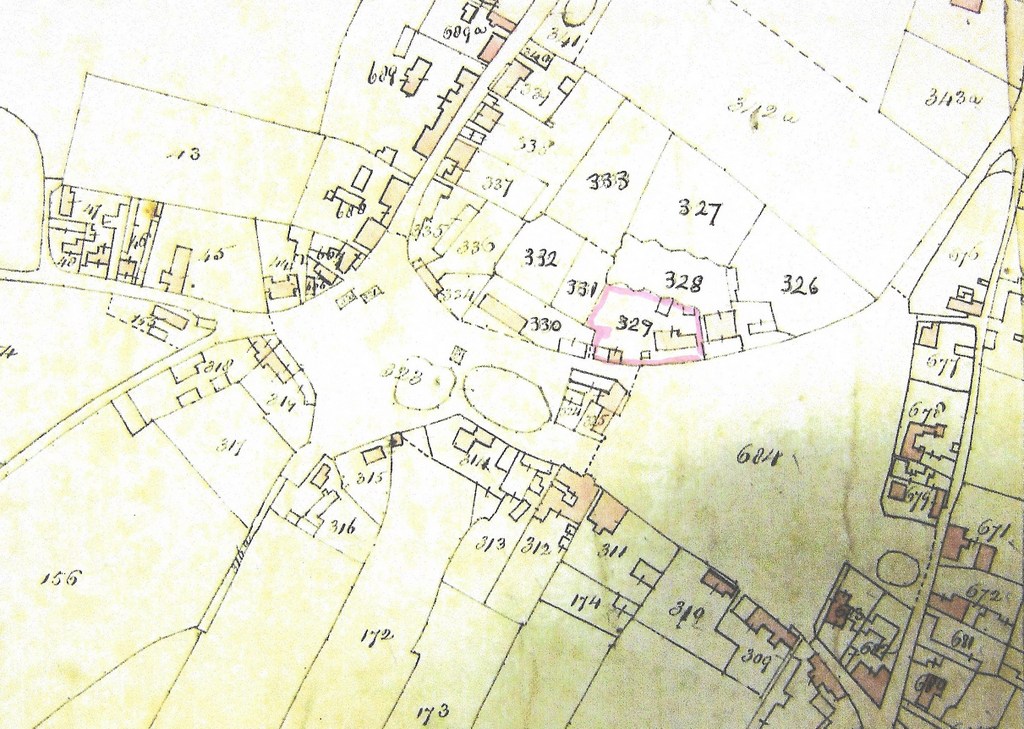
Appendix RO05
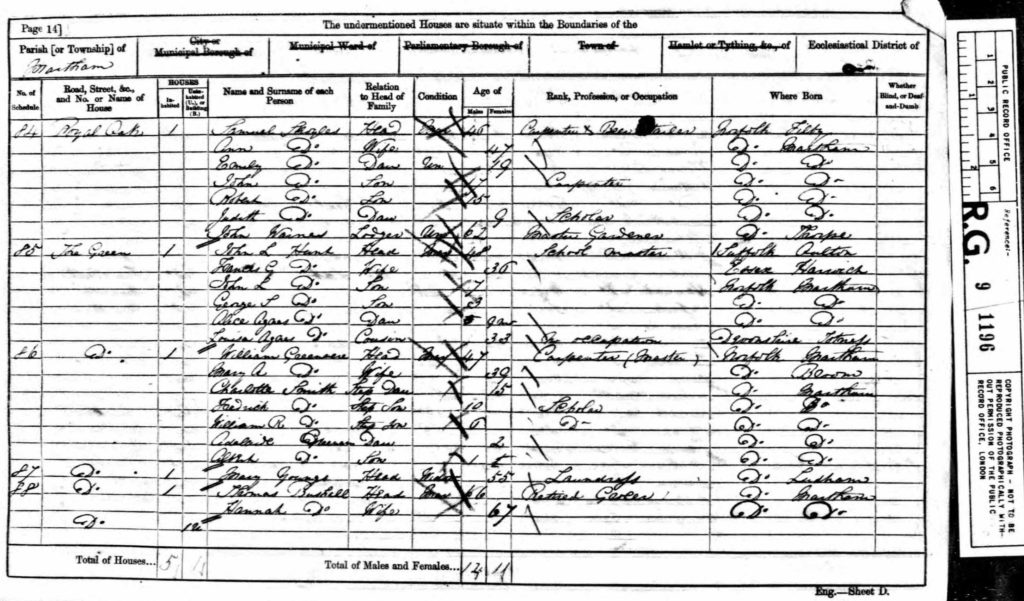
Appendix RO06

Appendix RO07
